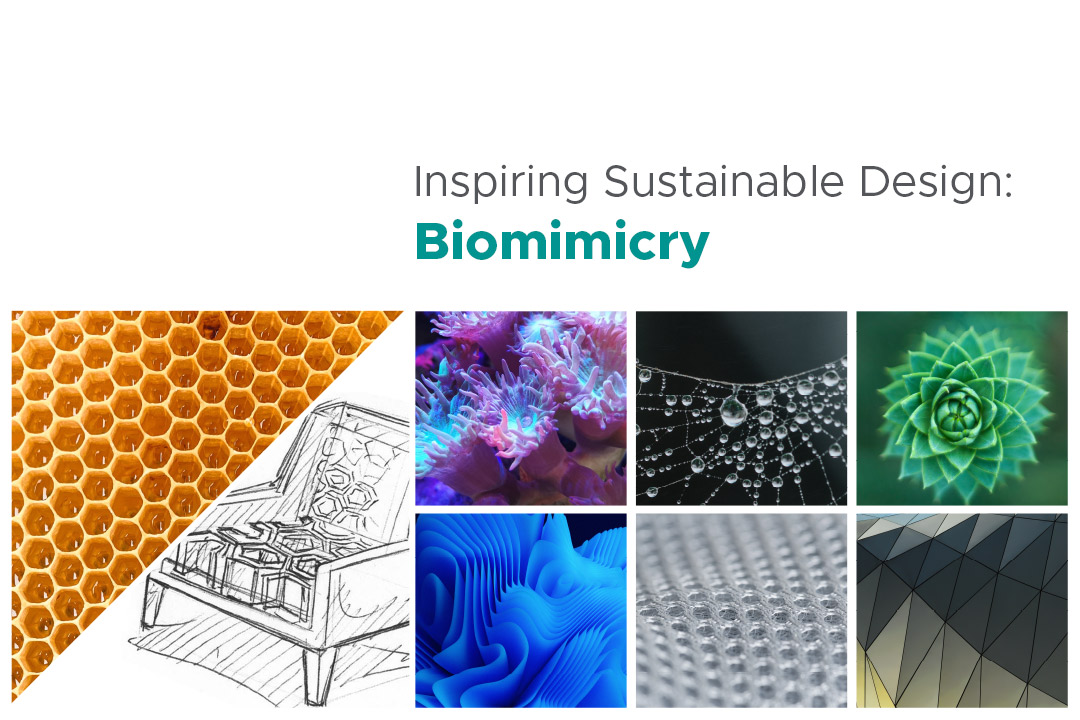
As climate change intensifies around the world, it is urgent for students to understand and utilize the principles of sustainable design in their entrepreneurial pursuits. To help faculty create opportunities for students to engage in green design methods, we’ll spotlight key exercises from the Tools for Design and Sustainability course, developed by Dr. Jeremy Faludi, assistant professor of industrial design engineering at Delft University of Technology (TU Delft). Over the next few months, we’ll explore several exercises that will help faculty easily introduce sustainable design concepts in their courses.
Scientists and entrepreneurs across the world are collaborating to design sustainable solutions to combat climate change—and they’ve discovered that some of the best ideas can be found in nature. Biomimicry is a practice that learns from and emulates strategies, systems, and elements that abound in the natural world to solve design challenges and complex problems.
Faculty can use biomimicry to teach sustainable design principles to students who are looking to solve the challenges of the climate crisis. One way to introduce this sustainable design methodology is through an engaging classroom activity. Below is a biomimicry mentors exercise from Dr. Jeremy Faludi’s Tools for Design and Sustainability. Visit the biomimicry section for additional exercises and examples.
Nature Can Be Both Teacher and Inspiration
Biomimicry mentors are organisms in nature that we can gather inspiration from to inform our design practices. For example, the beak from the kingfisher bird inspired the narrow nose design on modern Japanese Shinkansen bullet trains, putting an end to the noisy sonic boom created when a train emerged from a tunnel, and also increasing its overall efficiency. The idea behind this exercise is simple: task students with brainstorming sustainable solutions using inspiration from various mentors. Here’s the breakdown:
- Students identify a sustainability problem in their innovation using a biological analogy, investigating where this problem already exists in the natural world.
- Then, these students explore how biological mentors like animals and plants have already solved this problem.
- Using their biomimicry mentors’ solution as inspiration, students design a strategy to mitigate or eliminate the problem.
Using Biomimicry Mentors To Sustainably Design a Chair
As part of a course with Dr. Faludi, students Stefanie Koehler, Shannon Rahkola, and AnnMarie Thomas created six design concepts for a sustainable modular chair system inspired by a variety of biological mentors. The students identified three goals for the new system: The chairs should be easy-to-disassemble, recyclable, and easily reusable. Below, you’ll see their designs, which were inspired by squid/octopi, the cocklebur plant, and bees/wasps.
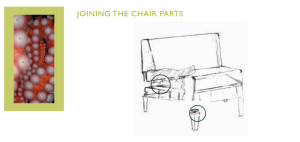
Strategy: Strong Bonding
A squid has many “suction” organs on its tentacles. These tentacles secrete a chemical glue (also found in flat worms and a handful of other organisms) that gives additional adhesion to the surface that it is attaching to—such as seaweed or grass—to hide from predators. They have also been know to attach to other animals—such a whale—leaving behind intense suction ring marks when removed. The tentacles also secrete a chemical to release the suction and glue from its attachment. It is a dual process of a suction cup with a “bonding” glue.
After studying the squid’s natural attachment process through its tentacles, the student team designed an assembly process in which 3D-printed latex suction cups are attached to the chair with a natural and environmentally safe glue.
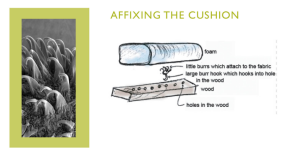
Strategy: “Sticking” two parts together
The cocklebur plant has hooks on it that stick to fuzzy things.
The students took inspiration from the burrs of the cocklebur plant to design biodegradable and 3D-printed hooks that can replace staples, which are not recyclable.
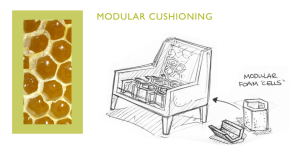
Strategy: Nesting cells support heavy weights
“The hexagonal cells of bees and wasps create an extraordinarily strong space-frame, in particular in the vertical bee comb with two cell layers back to back with half a cell’s shift in the position to create a three-dimensional pyramidal structure.”
The students determined that they could design a foam cushion made of separate hexagonal parts which could be adjusted by density for comfort and could be easily replaced if damaged or worn out.
Blue Jeans Inspired by Nature
Another student team of Dr. Faludi’s created sustainable alternative designs for denim jeans, inspired by a number of animals and plants. The students, Deann Garcia, Wai-Jing Man, Shanna Ruyle, and Alyssa Yatabe, strategized ways to decrease negative environmental impacts while the jeans were being used by a consumer. The students repurposed nature’s design of multi-species cooperation among forest plants and fungi to conceptualize jeans that include removable cleaning elements, and emulated the lotus leaf as inspiration for alternative denim that can repel liquids and self-clean.
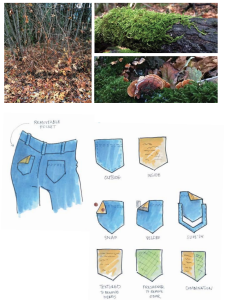
The students researched how fir, oak, and cherry trees collaborate with lichen, moss, and mushrooms to clean and maintain their ecosystem, and applied this learning to create a removable insert for jeans that is padded with cleaning and freshening components. With these elements incorporated into the product itself, consumers would use less water and electricity to clean and maintain their jeans.
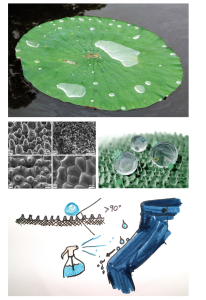
The students took inspiration from the lotus plant’s superhydrophobicity to design jeans that don’t absorb water, instead repelling water which picks up dirt particles while sliding off the fabric. Like the team’s first example, this design would enable consumers to decrease their use of laundry detergents and washing machines, which are notoriously bad for the environment. The average residential washing machine uses over 40 gallons of water per load.
Nature has already solved many of the challenges we face. Through biomimicry, students can create innovations that work in tandem with the environment and help alleviate the challenges of the climate crisis. With this exercise and the others in the Tools for Design & Sustainability, faculty can introduce the core principles of sustainable design to their students and help them develop environmentally conscious innovations.
Over the next few months, we’ll be sharing more easy-to-implement exercises for your course, in the rest of the Inspiring Sustainable Design series.
Samuel Yoo, a Program Officer at VentureWell, supports institutions with developing programs involving sustainability-focused science and technology innovation and entrepreneurship. Previously, he researched bioenergy solutions at the Energy Biosciences Institute, taught STEM disciplines in public schools, and led sustainability efforts at the University of Illinois Urbana-Champaign.